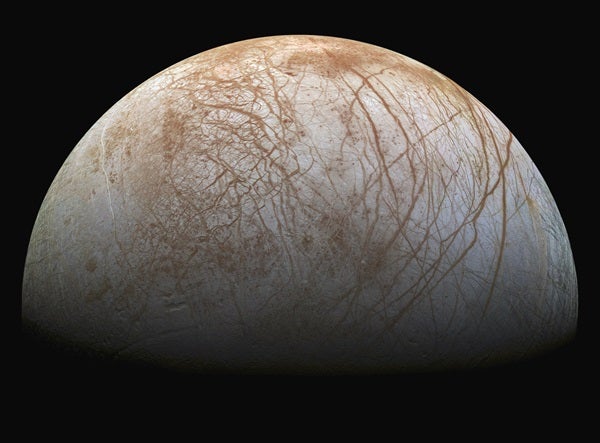What exactly is life, anyway? Biologists define life as self-replicating molecular systems that contain DNA and RNA and use energy, reproduce, and undergo Darwinian evolution. There are other characteristics, but those are the primary ones. And the possibilities for life are actually pretty intriguing. Spectroscopy tells us that chemistry is uniform throughout the cosmos. We know that basic organic molecules are spread liberally throughout the universe, even in the one and only comet sample to be returned to Earth.
It’s also a big universe out there. We know of at least 10,000 billion billion stars in the cosmos. And exoplanetary systems near us in the Milky Way demonstrate that most, if not all, stars should also harbor planets. It’s exciting to think of other sophisticated creatures we could run into one day, or at least communicate with from afar. That’s the basis of the whole genre of science fiction. But what about more commonplace life? Biochemistry suggests that for every place you might find sophisticated life like us — hold the jokes — you would probably witness many more places hosting microbial life.
Some of those places might exist right under our noses. Our most storied planetary neighbor, Mars, has a long history of speculation about its potential for life. Space missions put an end to science fiction thoughts about martian creatures, but ample evidence of past and recent liquid water on the surface — and of subsurface water and water ice — have fueled ideas about microbial life on past or present-day Mars.
Interestingly enough, research on the icy bodies in the outer solar system has led to a flood of ideas about possible microbial life out there. Before New Horizons flew by Pluto in 2015, no one really would have talked about the possible existence of microbes in slushy, icy reservoirs beneath the frozen crust of Pluto. But team members now talk about that as a distinct possibility.
For a long time, dating back to the Voyager missions, scientists have contemplated icy moons of the solar system as possible homes for microbes, past or present. The poster child has been Europa, one of the four Galilean moons of Jupiter. Europa undergoes tidal heating from its large planet and has either a subsurface liquid ocean or an icy, briny layer of warm convecting ice underneath its outer shell. Either one might make a comfy place for organic chemistry to do its magic and eventually produce some self-replicating molecules.
And Europa isn’t the end game — saturnian satellites also offer intriguing prospects. Titan, the largest, has a dense atmosphere and an exotic environment consisting of methane and ethane lakes. It is sometimes half-jokingly called the “gasoline planet.” This might sound like a strange place for microbes, but as researchers have learned more about microbial life on Earth, they have found it to be hardier than ever dreamed of before. If so-called extremophiles exist in the most awful environments imaginable, microbes could have evolved to thrive in a methane-rich environment, too.
Saturn’s Enceladus also could offer a rich environment for tiny life. Cryovolcanoes on this icy moon shoot watery geysers high above the moon’s surface, and scientists have discovered complex organic molecules in the moon’s composition. Even farther out, Triton, Neptune’s largest satellite, could also be an icy abode for small living organisms.
This special report examines the possibilities for life existing elsewhere in the solar system. It will take you on a journey of the mind that, if you’re lucky, will reshape slightly how you see life on Earth, around you, every day of the year. What do you think?










